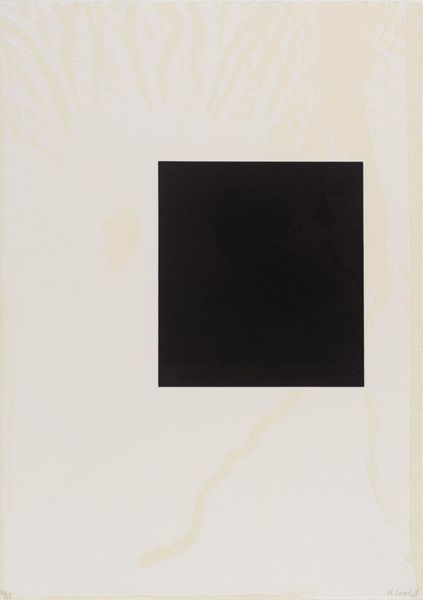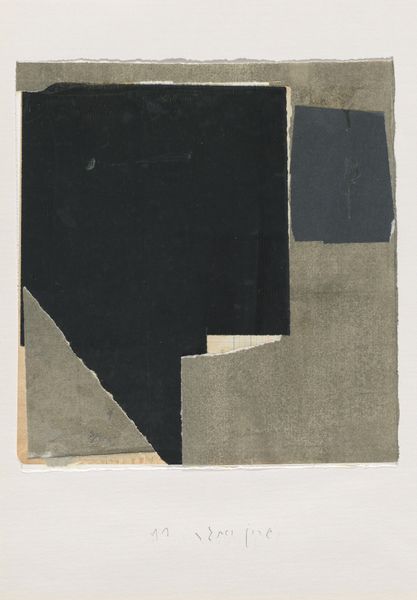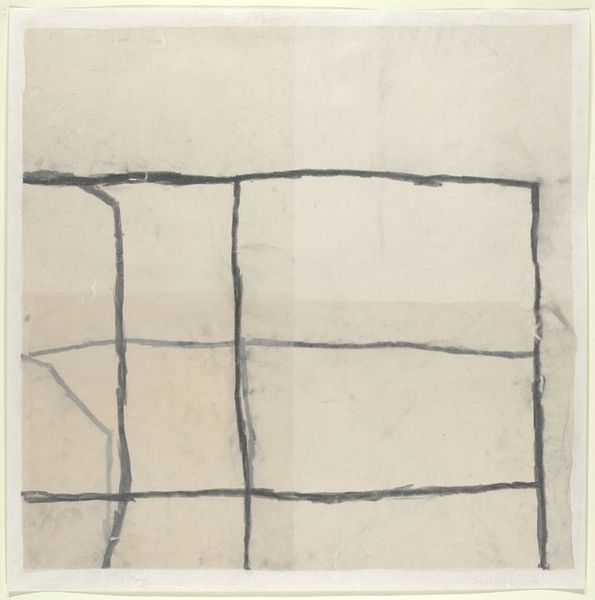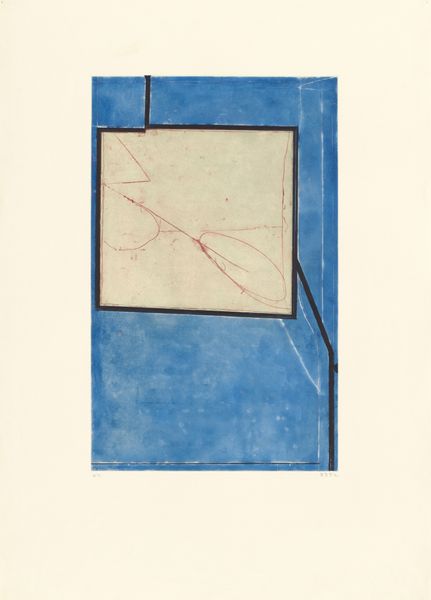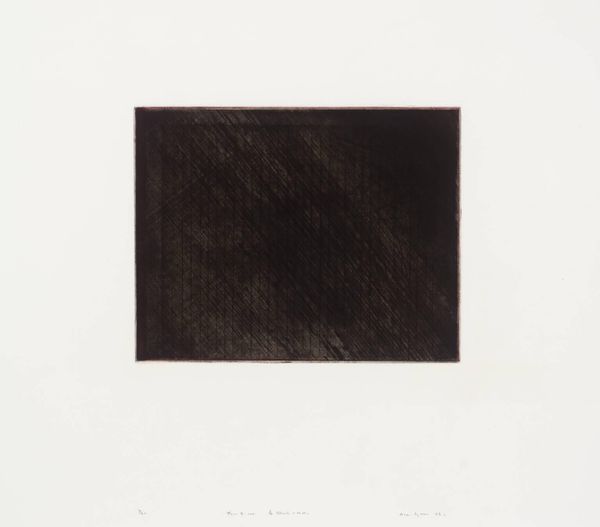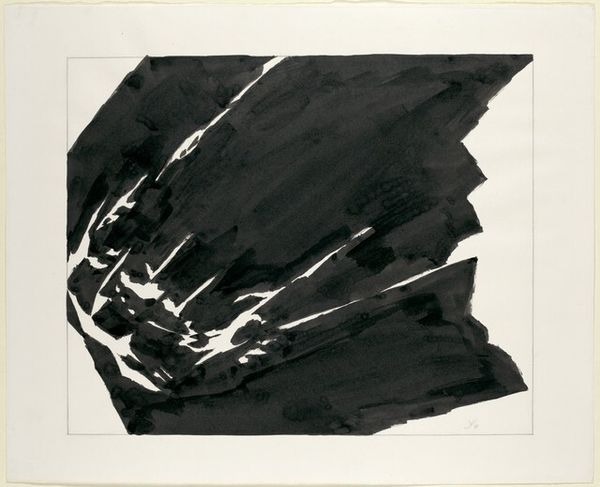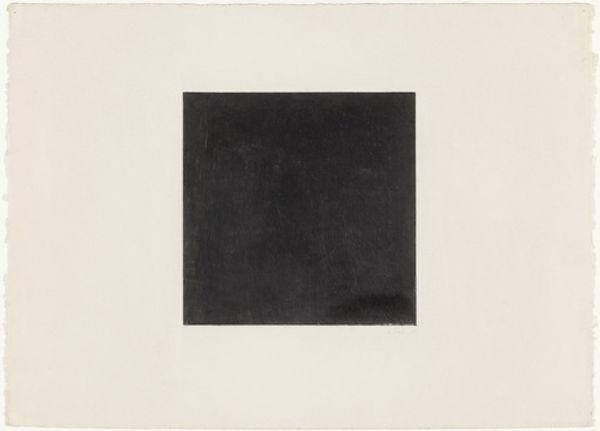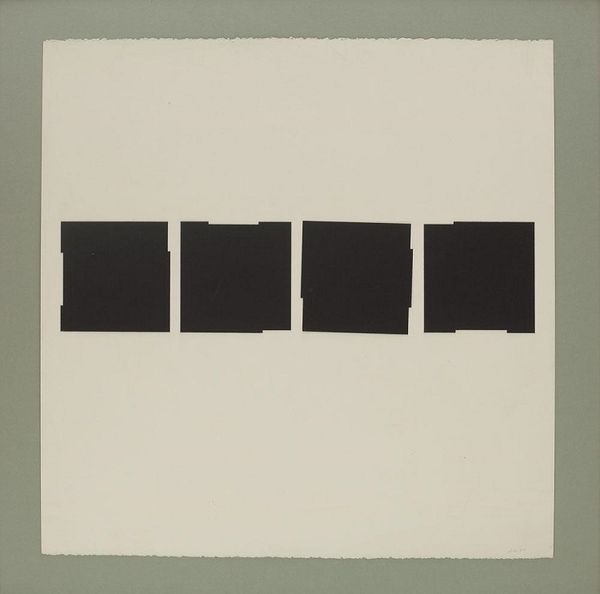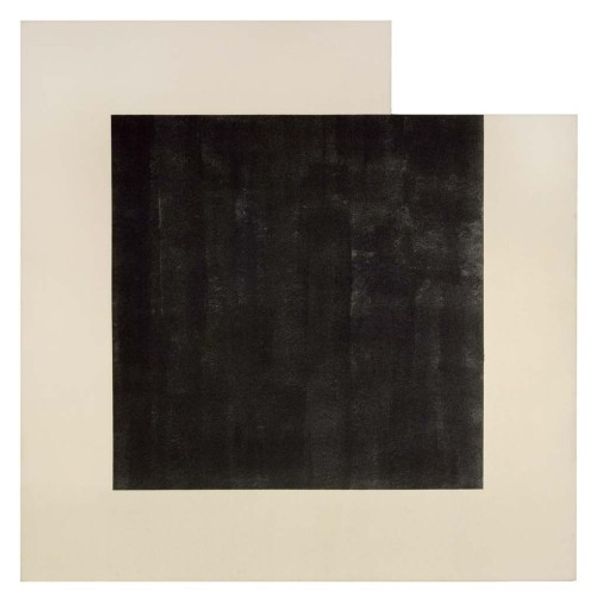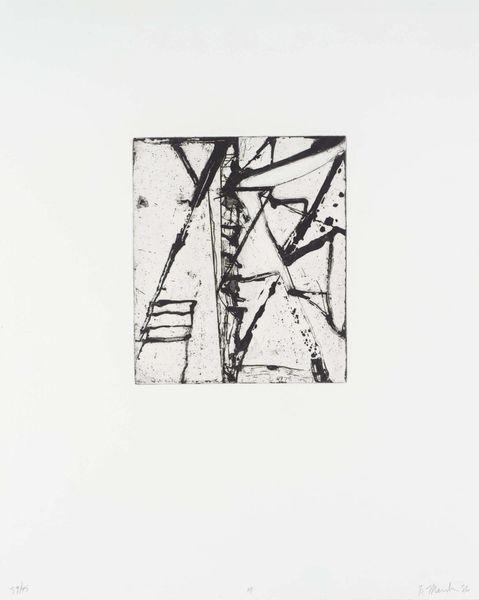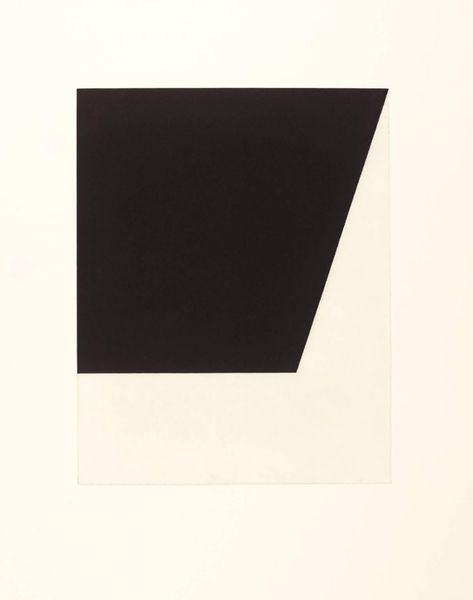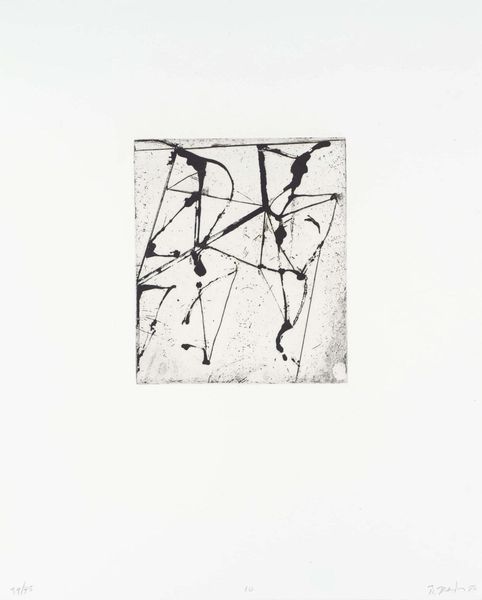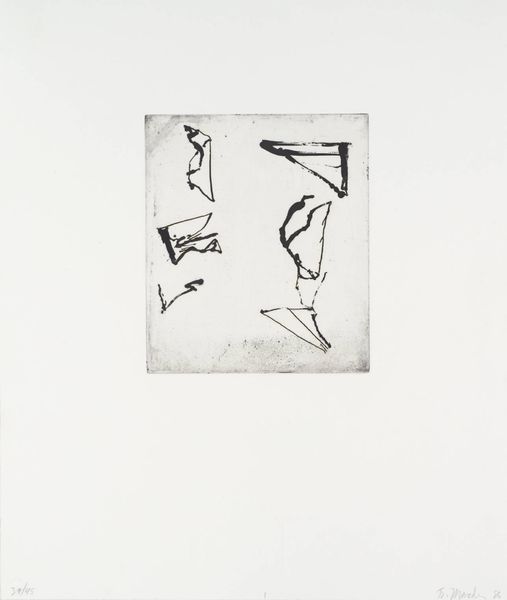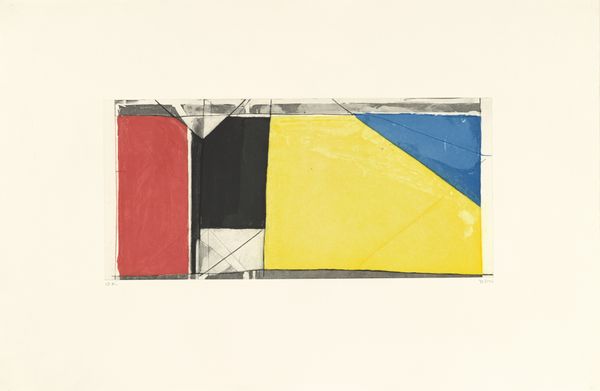
#
bay-area-figurative-movement
Dimensions: image: 32.7 x 53 cm (12 7/8 x 20 7/8 in.) sheet: 65.4 x 84.1 cm (25 3/4 x 33 1/8 in.)
Copyright: National Gallery of Art: CC0 1.0
Editor: This is Richard Diebenkorn’s "Folsom Street Variations I (Black)" from 1986, a print. The stark geometric lines against those dark blocks of color feel both rigid and… vulnerable, somehow. What do you see in this piece? Curator: I see a powerful meditation on space and division. The title, "Folsom Street Variations," suggests a connection to a specific place, and knowing Folsom Street in San Francisco during the '80s—a nexus of counterculture, particularly the BDSM and gay communities—that title vibrates with layered social meanings. Do you think the "black" in the title only denotes color? Editor: I hadn’t considered that! It does change how I see the piece; it adds a whole dimension relating to queer identity in San Francisco, doesn't it? So the geometric abstraction… is that a way of concealing and revealing at the same time? Curator: Exactly. Think about how social norms often police and try to control bodies and expressions, especially queer ones. The hard lines could represent those structures. But the subtle variations, the imperfections within those blocks of color, hint at the complexity and resistance to easy categorization that define human experiences and the queer community, especially during a time of increasing political oppression and the looming AIDS crisis. What do you make of that diagonal slash of a line cutting through the center? Editor: I think that destabilizes the rigidity you mentioned earlier; it's disruptive. Thank you. I won't look at abstract art the same way now. Curator: Precisely, understanding those connections between form and context opens up deeper meanings. Remember to always ask: whose voices are present, and whose are being silenced, in any artwork we encounter?
Comments
No comments
Be the first to comment and join the conversation on the ultimate creative platform.
